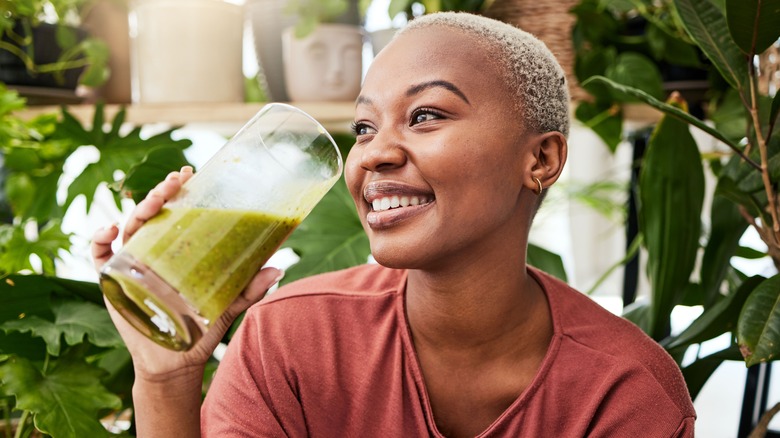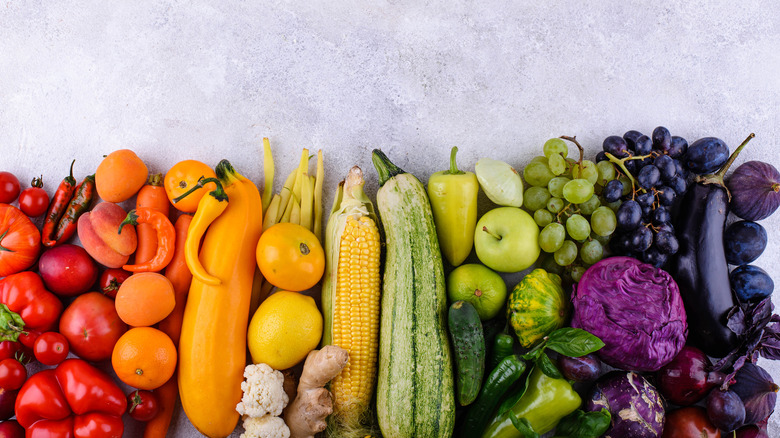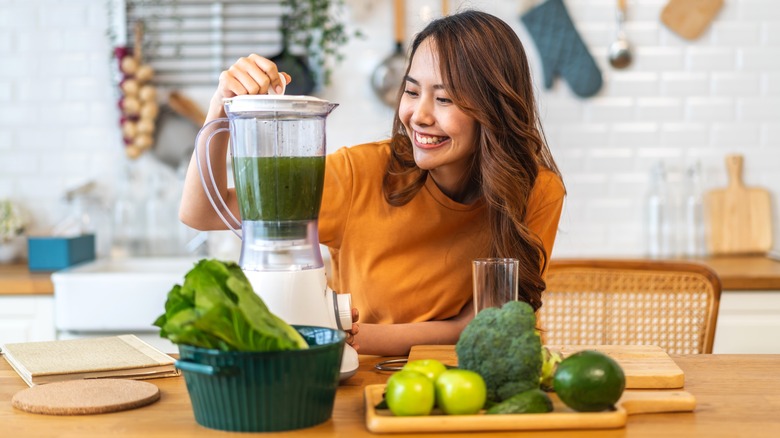When You Drink A Smoothie Every Day, This Is What Happens To Your Blood Pressure
Smoothies offer a tasty way to get in your daily fruits and vegetables. Plus, making a healthy smoothie is easy. Just pack some vegetables you don't like to eat and then blend with some pineapple or berries. Need some protein? Add a scoop of whey or plant-based protein powder. Some chia seeds, avocado, or a small handful of nuts provide some healthy fats to give you sustained energy.
Most sensible diets recommend getting more fruits and vegetables in your diet for overall health. The American Heart Association suggests four or five servings of each per day, and a serving might include a medium-sized fruit, ½ cup of frozen vegetables, or ¼ cup of fruit juice. If you put half an avocado, four large strawberries, and ½ cup of frozen spinach in your blender, you're already three servings in for heart health. When you drink a smoothie every day, you'll also reduce your risk of high blood pressure.
It's all about the fruits and vegetables
How many servings of fruits and vegetables do you get a day? Even if you're one of the many Americans who don't eat enough fruits and vegetables, the more you sneak in a few fruits and veggies here and there, the lower your risk of hypertension. A 2016 analysis in the Journal of Clinical Hypertension pulled the results of 23 studies to see how fruits and vegetables are linked to high blood pressure. Compared to those who ate the fewest fruits and vegetables, those who aimed for the most servings each day lowered their risk of hypertension by 19%. Fruit seems to have more impact, reducing their risk by 27%. Vegetables were linked to a 3% reduced risk.
The researchers concluded that the potassium, magnesium, vitamin C, and other important nutrients in fruits and vegetables can improve the lining of your blood vessels, open up your blood flow, and boost your body's defense against free radicals. It's also a matter of what these fruits and vegetables are replacing in your diet. In other words, eating more fruits and vegetables more than likely means you're getting more fiber and less fat in your diet. Older studies have shown a link between a high-fat diet and blood pressure (per Hypertension).
What's in your smoothie?
If you really want to reduce your blood pressure, you might want to try the double G. A 2016 study in the Journal of the Council on Nutrition came up with this smoothie made with guava, granadilla (a type of passion fruit), ground cinnamon, and flaxseed oil. Eleven people over 50 who had hypertension took part in the study, and the nine people who drank the double G reduced their systolic blood pressure on average by 13 and diastolic by 10.
This smoothie comes packed with 1,000 milligrams of potassium, 500 milligrams of vitamin C, and 15 milligrams of lycopene to help reduce blood pressure. Beware, though, because it also comes with 25 grams of fiber. Although this was a small study, it shows how much nutrition you can get in a single smoothie.
Remember that smoothies aren't necessarily healthy if you don't control the ingredients, particularly in store-bought smoothies. They're often loaded with added sugar rather than natural sugar from the fruits and vegetables. Also, just because you're drinking healthy smoothies doesn't mean they're calorie-free. It might be easy to add them to your daily diet, but you'll also want to swap out the unhealthy snacks that provide little nutritional value. Consider adding healthy ingredients to your smoothie to ensure you're getting the most out of your blender creation.



